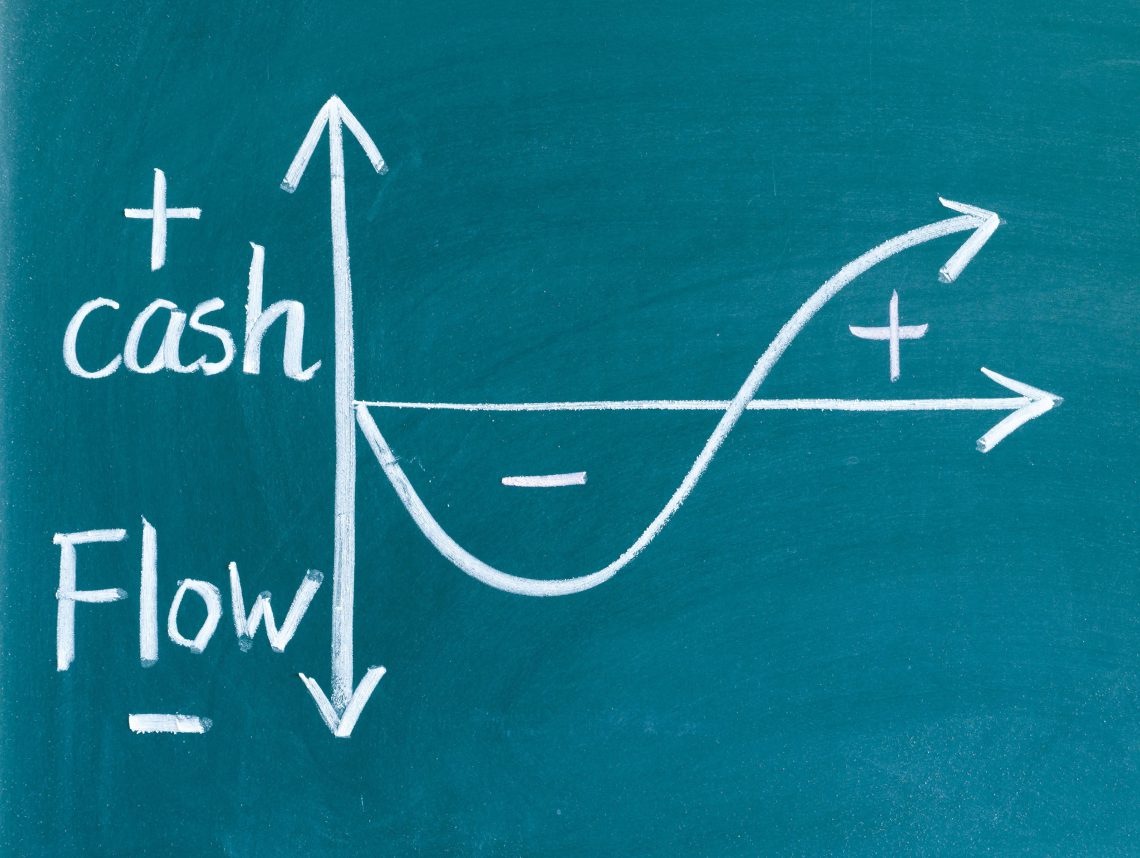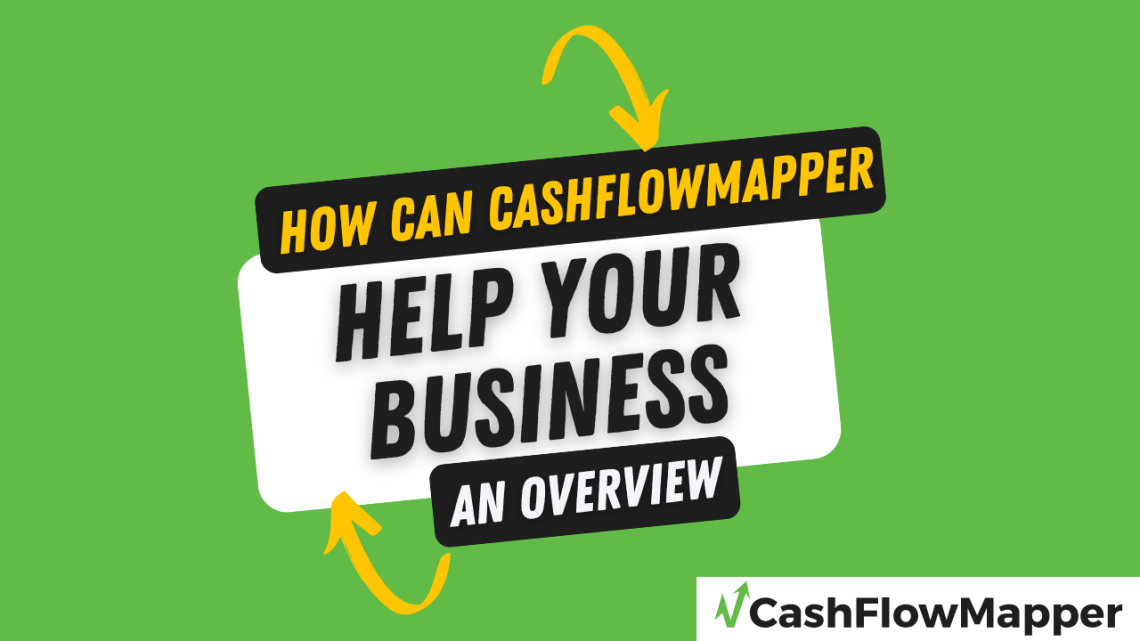Introduction
This paper is the first in a series of four – Take Control of Your Cash – that looks at a common sense approach to cash flow budgeting/planning/forecasting that is applicable to any business – including yours! First, let’s set out what we mean by budgeting, planning, and forecasting in the context of cash flow.
- Planning – sets out the intentions of the organization for a period of time (where we want to go).
- Budgeting – breaks down the plan generally into financial years and then into months.
- Forecasting – sets out expectations for a period of time, given what we know and are anticipating: where we are going. It follows that the forecast should be updated often.
The concepts discussed are relevant to all of these activities.
The series discusses cash flow forecasting by identifying six elements necessary to understand and using them in building a cash flow model to help you stay in control of your business.
- The Comfort Level of Cash – we all have one, but what is yours? (this article)
- The Remaining 4 Elements of Cash Flow
- An Approach to Planning & Forecasting Cash Flow
- Cash Flow, Comfort Level of Cash, & Profit
The Comfort Level of Cash
Here’s a little test for you. Log in to your online bank account, or pick up your bank statement if you have it handy. Look at the current balance. You know straight away whether you are comfortable with that amount, and there’ll be many possible reasons for how you feel. And, of course, we all want more cash, so maybe to some extent, we’re never satisfied with our bank balance!
Reasons for comfort
- You’ve been in business for a long time, and you understand your industry well. Your cash movements are predictable, and there’s very little volatility in your business.
- Your cash outflows are stable, so your comfort level of cash is too.
- You have enough cash in reserve to overcome any short-term spike in outflows or downturn in inflows.
Reasons for discomfort
- You are new to your business and/or industry and are still unsure or haven’t worked out what you need in your account at all times.
- The current environment is uncertain or unusual, and that, in turn, makes you uncertain as to how much cash you need available at any one point in time.
- A sudden emergency has resulted in a sudden cash drain, and ongoing outflows of unknown quantity may result.
How to come up with your comfort level of cash
Whatever your situation, it’s important to understand why you feel the way you do every time you see your bank balance and the factors that lead to that. Some people just operate on “gut feel,” and while they may survive this way, it’s hard to optimise your cash. That is, have enough available for when you need it, but know when you have excess cash available that can be put to far better use than just sitting in your operating account, effectively losing money.
So, how do you arrive at the minimum level/comfort level of cash you need available for your business?
Start with what you know – Element 1: short term cash flows
- Short-term transactions – Fixed Costs & Regular Outgoings
These are the cash outflows that occur regardless of anything else that happens in your business and typically turn over in less than a 12-month period. These items, therefore, form part of your comfort level of cash – you must have the cash available at all times to cover these items. Bear in mind that while most of them occur regularly, such as payroll, some don’t. It’s the ones that don’t that can catch you out. Typical examples will be;
- Regular payments: typical items will be rent, insurance utilities, & other creditors.
- Consider payment terms of various suppliers.
- Payroll Components: net pays, income tax, payroll tax, retirement pension funds/superannuation, workers’ compensation.
- Taxes & other regulatory costs: income tax, goods & services/sales/value-added tax, property rates.
Now, most of these occur on a monthly frequency or less. However, some, such as your annual insurance or workers’ compensation premium, don’t. How do you then work out what cash you need on hand at all times to cover these?
There are a couple of ways to approach this. The starting point is the fact that the longest frequency of any of these items is 12 months. To take a more conservative approach, you work out the total cash outlay over 12 months and then work out what this equates to over a month, fortnight, or week – whatever period you are comfortable working with.
The following table shows a simple example of outflows and when they occur. The total outflow on a weekly, monthly, and yearly basis is then shown.

A typical approach to determining a comfort level of cash would be to take the monthly figure and ensure you have a certain number of months of this on hand.
In general, people keep between two and six months of regular outflows on hand.
The more confident you are of your business conditions, the less cash on hand you’ll believe you need to keep, and vice versa. It’s important to factor in amounts for transactions that have a frequency of more than a month into your calculation. You may be confident that you’ll have the cash available for when the yearly transactions occur, in which case you can reduce your comfort level of cash by their respective monthly amounts.
1. Short Term Revenue Inflows
We’ve only looked at outflows so far. You are in business to make money, not just spend it, so the next thing to consider is cash inflows. Regardless of industry, forecasting inflows is never easy. You can have seemingly identical customers in terms of business size and purchase behaviour, but in terms of payment behaviour, they can be worlds apart for all sorts of reasons. You need to factor in typical payment terms based on past behaviour, as well as allow for anticipated growth/contraction in sales as well.
With regards to new businesses, be realistic with forecasting growth or the addition of new inflow streams. When new customers come online, ensure you consider credit checks and industry standards with regard to expected payment behaviour.
2. Variable Costs associated with Inflows
The final thing to consider is any variable costs linked to your inflows.
These are incurred only when revenue-generating events occur, so be aware of any relationship among these items. An example would be delivery costs incurred in distributing a sold item to a customer. If you sell an item for $100, but it costs $20 to deliver, then you need to be thinking of how many $80 transactions are going to occur.
Arriving at Comfort Level of Cash – Element 2
Once you’ve taken the above three components of cash inflows into consideration, you may revise your comfort level of cash – reduce it given your confidence around inflows. Many businesses don’t do this and simply ensure a certain number of months are held. Some even operate covering payroll-related outflows only – this is determined by the level of risk you are prepared to take and your confidence in your cash flows.
Your comfort level of cash may vary throughout the year, given seasonality. For example, a tourism-related business will have higher cash inflows during peak tourist times than during non-peak times of the year. The comfort level of cash will be higher during off-peak than peak due to greater inflows received during peak times given a high level of fixed cash outlays to cover.
Summary
- Given that most regular outflows occur on a 12-month cycle at most, analyse these on a 12-month basis, as per the table in the example above.
- Determine cash inflows. Your risk appetite – the level of risk you are prepared to assume – will determine this, given the payment behaviour of existing customers and assumptions made around new ones.
- Your comfort level may fluctuate throughout the year, depending on seasonal factors.
However you end up at your comfort level of cash, the test is that every time you look at your current bank balance, you know within yourself whether or not that amount is what you need. If it’s too low, you need to take immediate action. If it far exceeds your comfort level, then put that excess cash to its best use – that’s what it’s for!
Next…
The first two elements of cash flow planning are the starting points in our next paper, Elements 4-6 of Cash Flow, which examines the characteristics of transactions further, looking in detail at what you need to take into consideration in preparing your cash flow forecast. These are simple concepts, but you must be aware of them to produce accurate cash flow forecasts.
The third paper, An Approach to Planning & Forecasting Cash Flow, discusses how to take the six elements and create cash flow plans that will enable you to take control of your business.
Finally, Cash Flow, Comfort Level of Cash & Profit discusses the important distinction between cash and profit and why you need to understand this in the context of your comfort level of cash.
CashFlowMapper is a cloud-based cashflow forecasting tool designed so you can understand and take control of your most important asset – cash!
Ideal for advisors, business owners, or finance professionals.




